Gorilla trekking is one of the most popular wildlife activities in Africa. Travelers from around the globe wish for the day and moment they will meet the largest living ape in their natural setting. Gorilla trekking is only possible in Africa. The most popular destinations are Bwindi Impenetrable forest in Uganda, Mgahinga National Park in Uganda, Virunga National Park in Congo and the Volcanoes National Park in Rwanda. Although exciting and exhilarating, the trekking experience is not a walk in the park. It takes determination and sometimes fitness to make it to the end (depending on the gorilla group you end up being assigned). Seniors, the elderly and disabled should read on for good news.
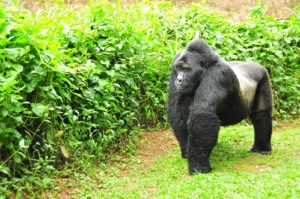 Mountain gorillas live in dense forests and mountainous areas. To get to them, one must go through valleys, rivers, streams and other natural features. The terrain can be sloppy or steep. There are also insects, thorns, sharp tree branches and shrubs to deal with while tracking the primates. Gorillas are always on the move and don’t settle in one place. Trackers may have to walk for long hours and distances to track them down. If one is not mentally prepared, they may get very tired, develop sore knees, get hungry or even thirsty.
Mountain gorillas live in dense forests and mountainous areas. To get to them, one must go through valleys, rivers, streams and other natural features. The terrain can be sloppy or steep. There are also insects, thorns, sharp tree branches and shrubs to deal with while tracking the primates. Gorillas are always on the move and don’t settle in one place. Trackers may have to walk for long hours and distances to track them down. If one is not mentally prepared, they may get very tired, develop sore knees, get hungry or even thirsty.
Despite the above challenges, the thrill of finding the primates deep in Africa’s jungles excites thousands of tourists every year. A close encounter with wild gorillas is priceless and will make you forget about the hurdles you may have gone through to find them. By now you must be asking yourself the following questions: –
- How long does gorilla trekking take?
- How hard is Gorilla trekking?
- What level of fitness is needed for gorilla trekking?
We will attempt to answer the above questions in the following chapters basing on our experience organizing gorilla trekking expeditions. You might want to read an article about the best place to see gorillas.
How long is Gorilla Trekking?
Gorilla trekking takes between 1 to 8 hours. The amount of time spent searching for the primates depends on a number of factors. One factor to consider is that gorillas live in families and each family 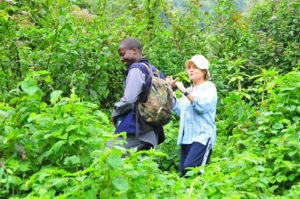 stays in different parts of the park. Some families normally reside near the park offices while others stay deep in the forest. If one is allocated a gorilla family near the park, he/she will take a shorter time compared to those who are assigned families deeper in the forest. Gorillas are nomadic animals. They keep moving from one place to another looking for better food. Some gorilla group families move a lot depending disturbances from silverback. If the silverback loves adventure, he will always be moving from one part of the forest to another. Groups that move frequently are more difficult to find.
stays in different parts of the park. Some families normally reside near the park offices while others stay deep in the forest. If one is allocated a gorilla family near the park, he/she will take a shorter time compared to those who are assigned families deeper in the forest. Gorillas are nomadic animals. They keep moving from one place to another looking for better food. Some gorilla group families move a lot depending disturbances from silverback. If the silverback loves adventure, he will always be moving from one part of the forest to another. Groups that move frequently are more difficult to find.
Another factor that affects the length of gorilla trekking is the terrain in the national park. Take Bwindi impenetrable national park for instance. Bwindi is a very large forest and has thick vegetation, water streams and valleys in some places. It is not mountainous or hilly like Mgahinga or Volcanoes National Park. However, gorilla trekking in some parts of Bwindi can take long because of the thick forests which make it hard to find the gorillas. However, the very natural features that prolong trekking also fascinates some tourists. Some love to explore the rivers, valleys and tree species 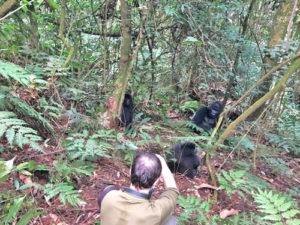 available.
available.
It is important to note that gorilla trekking in the Volcanoes national park, Virunga national park and Mgahinga national park also presents challenges to tourists. Mgahinga and the Volcanoes National Park are not so big like Bwindi but are very mountainous. The sky in these two parks can be covered with mist and fog which reduce visibility on some days. Searching for gorillas in mountainous areas can be very tiring to those who are not very fit. The advantage with searching for gorillas in these two national parks is that the activity generally doesn’t go on for too long.
What level of fitness is needed for gorilla trekking?
Gorilla trekking often involves walking for long distances and hours through dense forest to find the primates. The activity requires determination, energy and some level of fitness. Tourists must be mentally prepared and ready to complete the activity regardless of the challenges they face.
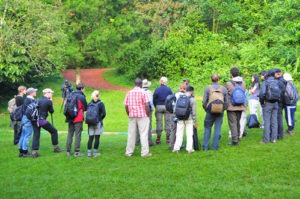 What about the elderly or those who are not fit? Although gorilla trekking generally requires fitness, the experience is open to all people including those who are unfit, disabled and elderly. Provisions and measures have been put in place to ensure that all people can see the primates. The disabled, elderly and those who are not fit are assigned gorilla groups close to the park offices. It can take only 30 minutes to find some gorilla groups. If one can’t walk because of age or a disability, there is a way out. With the help of porters and a sedan chair, the traveler can be carried right up to where the primates are located.
What about the elderly or those who are not fit? Although gorilla trekking generally requires fitness, the experience is open to all people including those who are unfit, disabled and elderly. Provisions and measures have been put in place to ensure that all people can see the primates. The disabled, elderly and those who are not fit are assigned gorilla groups close to the park offices. It can take only 30 minutes to find some gorilla groups. If one can’t walk because of age or a disability, there is a way out. With the help of porters and a sedan chair, the traveler can be carried right up to where the primates are located.
Elderly and physically disabled travelers are advised to book their gorilla tour earlier so that special arrangements are made. The tour company needs to plan for the allocation of an easy gorilla group, hiring extra porters and providing a special sedan chair if required. Gorilla trekking for the elderly involves hiring 8 porters and sedan chair which all cost $500. The sedan chairs are designed for the physically disabled but can be used by those who are simply unfit.
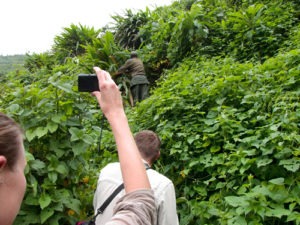 To ensure a smooth hike, all tourists are advised to hire porters for gorilla trekking and hiking sticks. The porters can help carry heavy luggage, cameras, binoculars, food, drinks, rain jackets and other things. Remember that you could easily get tired, hungry and worn out to carry heavy things – especially if you go for a more difficult trek. Hiking sticks are required for support when hiking through steep and sloppy trails. The sticks are free of charge and given to everyone during the initial briefing at the park office. It is important to follow all the gorilla trekking rules when out in the forest. Always follow instructions from the Park Rangers so that you don’t get into trouble.
To ensure a smooth hike, all tourists are advised to hire porters for gorilla trekking and hiking sticks. The porters can help carry heavy luggage, cameras, binoculars, food, drinks, rain jackets and other things. Remember that you could easily get tired, hungry and worn out to carry heavy things – especially if you go for a more difficult trek. Hiking sticks are required for support when hiking through steep and sloppy trails. The sticks are free of charge and given to everyone during the initial briefing at the park office. It is important to follow all the gorilla trekking rules when out in the forest. Always follow instructions from the Park Rangers so that you don’t get into trouble.
How to improve fitness levels for gorilla trekking?
Even though you trust your fitness levels, it is important to prepare in advance both physically and mentally before tracking gorillas. Preparation is the key to completion of any task. For those who may doubt their fitness, we recommend that you begin these common exercise drills 2 weeks before gorilla trekking: –
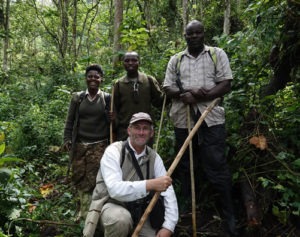 Walk or Hiking before the trip: Condition your body for long walks and hikes. Two weeks before traveling for gorilla trekking, take walks regularly in nearby forests, around your home or close to your place of work. This will prepare your body for and challenges during gorilla trekking.
Walk or Hiking before the trip: Condition your body for long walks and hikes. Two weeks before traveling for gorilla trekking, take walks regularly in nearby forests, around your home or close to your place of work. This will prepare your body for and challenges during gorilla trekking.
Stretching: Stretching helps warm up and loosen the body muscles. If done properly, it helps your body deal with muscle contraction and pain during long hours of trekking.
Note: Apart from knowing how hard gorilla trekking is, you also need to pack the right items for your gorilla trekking adventure. Items on a gorilla trekking packing list include hiking shoes, a waterproof backpack, polyester clothes, gloves, hat/cap, a rain jacket, jelly, insect repellents, sanitizers, masks, sunglasses, snacks and bottled drinking water.


